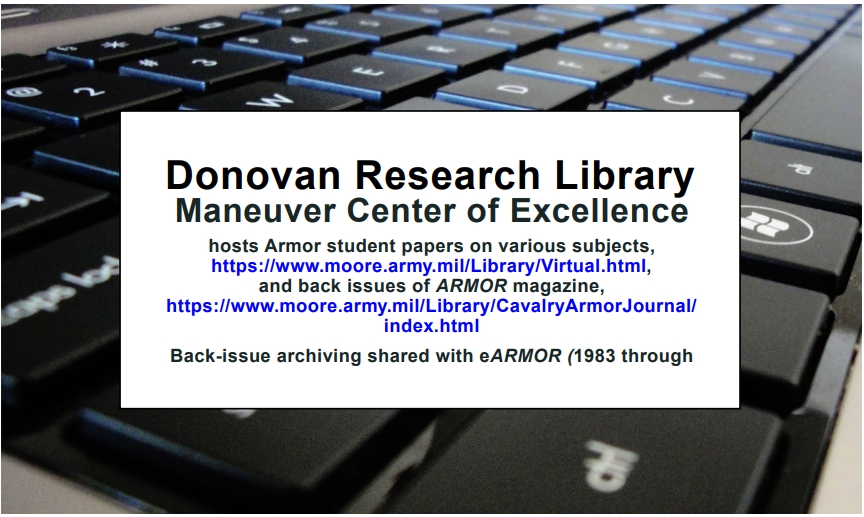Strike Swiftly
Developing Sustainable Maintenance Strategy in Combined Arms Battalion
By LTC Mike Kim, MAJ Nate Bennett, CW3 Jason Amsdell and 1LT Collette Benavidez
Article published on: October 1, 2024 in the Armor Fall 2024 Edition
Read Time: < 13 mins
The mission of the combined arms battalion (CAB) is to close with and destroy enemy forces using fire, maneuver,
and shock effect or to repel their assault by fire and counterattack (Army Techniques Publication 3-90.5,
Combined Arms Battalion). Although this is the singular mission of the CAB, the
demands and requirements put on the organization are great, and personnel challenges [both military occupational
specialty (MOS) and experience shortages] exacerbate the ability to effectively meet mission. While the Region
ally Aligned Readiness and Modernization Model (ReARMM) provides a framework with clear delineation between
train, modernization, and mission windows, in practice, there is overlap where mission sets bleed into each
other creating great demand on battalion formations.
Given this environment, it is paramount that leaders provide a clear and detailed vision that prioritizes and
manages both training and maintenance lines of effort, while clearly articulating areas where risk can be
assumed.
There are many ways to approach this problem set. The purpose of this paper is to convey a way to define the CAB
fight, develop a framework to guide the maintenance enterprise, and provide recommendations to equip battalions
in executing their mission set.
Defining CAB fight
It is commonly said that maintenance builds lethality. In a constrained environment, it is more apropos to state
that lethality requirements drive maintenance. It is the responsibility of the Battalion Commander to clearly
define what lethality means to the formation. The following utilizes an approach used by the 2nd Battalion, 70th
Armor Regiment, 2nd Armored Brigade Combat Team (ABCT), 1st Infantry Division. The overachieving goal of the
2-70 Armor is the following: Thunder Battalion coordinates and synchronizes warfighting functions to mass two
companies at the decisive point.
It is a singular statement that guides all battalion efforts. The commander is responsible to define this
guidance based on a clear and defined con struct. The CAB construct can be broken down as depicted in Figure 1
below.
For each of these elements, the lethality capability requirements can be summarized as depicted in Table 1.
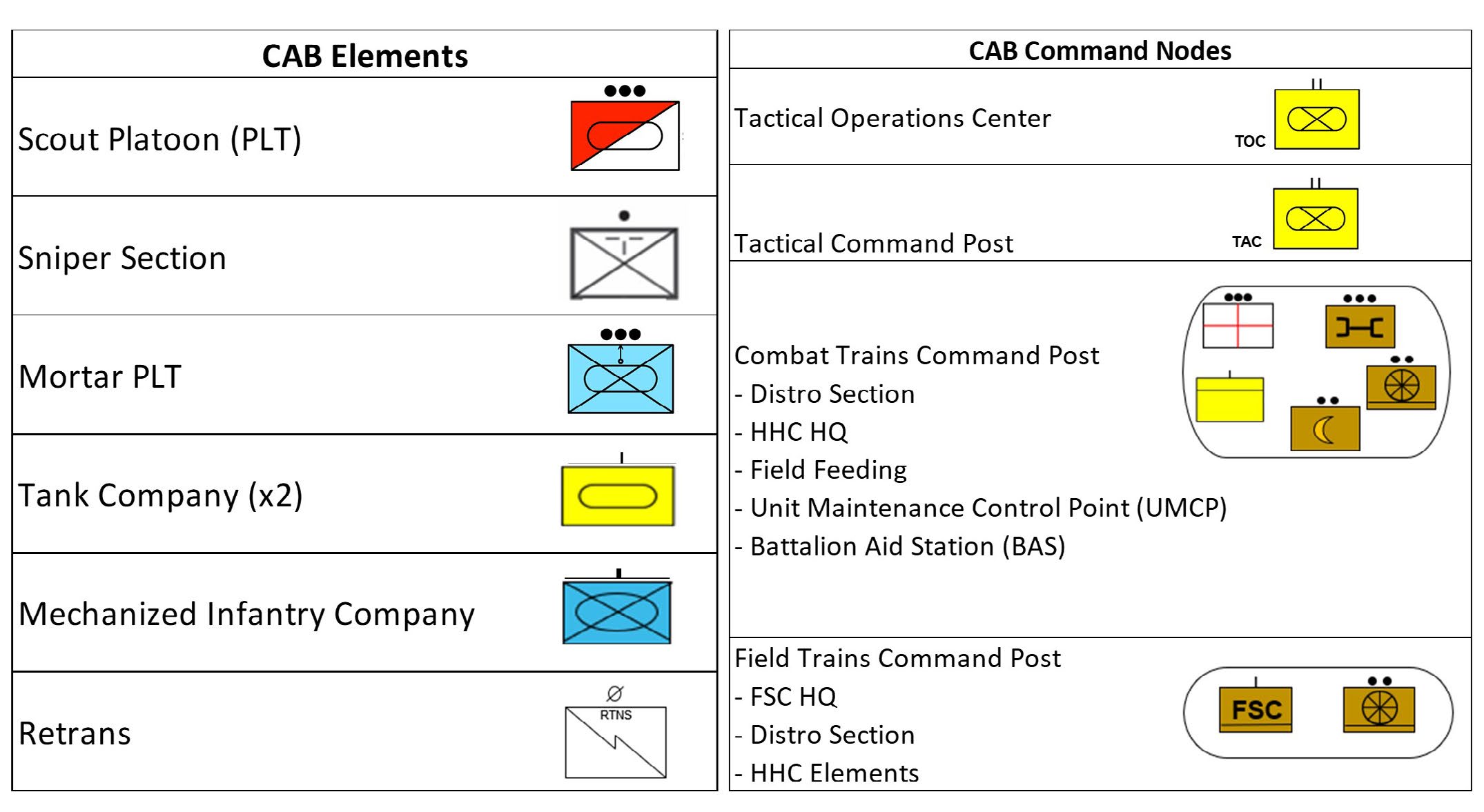
Figure 1. Identification of CAB elements and command nodes. (U.S. Army)
Having listed all the required lethality capabilities, it is important to clearly describe the equipment/platform
needed to meet each capability. This category, which is called the Fight category, is the baseline of equipment
/ platforms needed to deliver the requirement. Although based on the modified tables and organization equipment,
the number requirements are based on a realistic evaluation of the fleet. Leaders who expect every piece of
equipment and platform to be fully mission capable are detached from reality or are being lied to. Using the
Scout PLT as an example, the baseline list of equipment / platforms needed to deliver the capability is depicted
in Table 2. The full list is depicted in Table 3. The overall vision is encompassed in the following compilation
of the figures depicted in Figure 2. This single framework (Figure 2. The Thun-der Fight) focuses the battalion
on both training and maintenance lines of effort.
Where formations fit
Each formation at echelon has a clear idea of how it fits into the overall fight and the equipment/ platforms
required to deliver their capabilities. The next logical step is to take the fight equipment/ platform
requirements and com-pare them to the current mission capable status of those items.
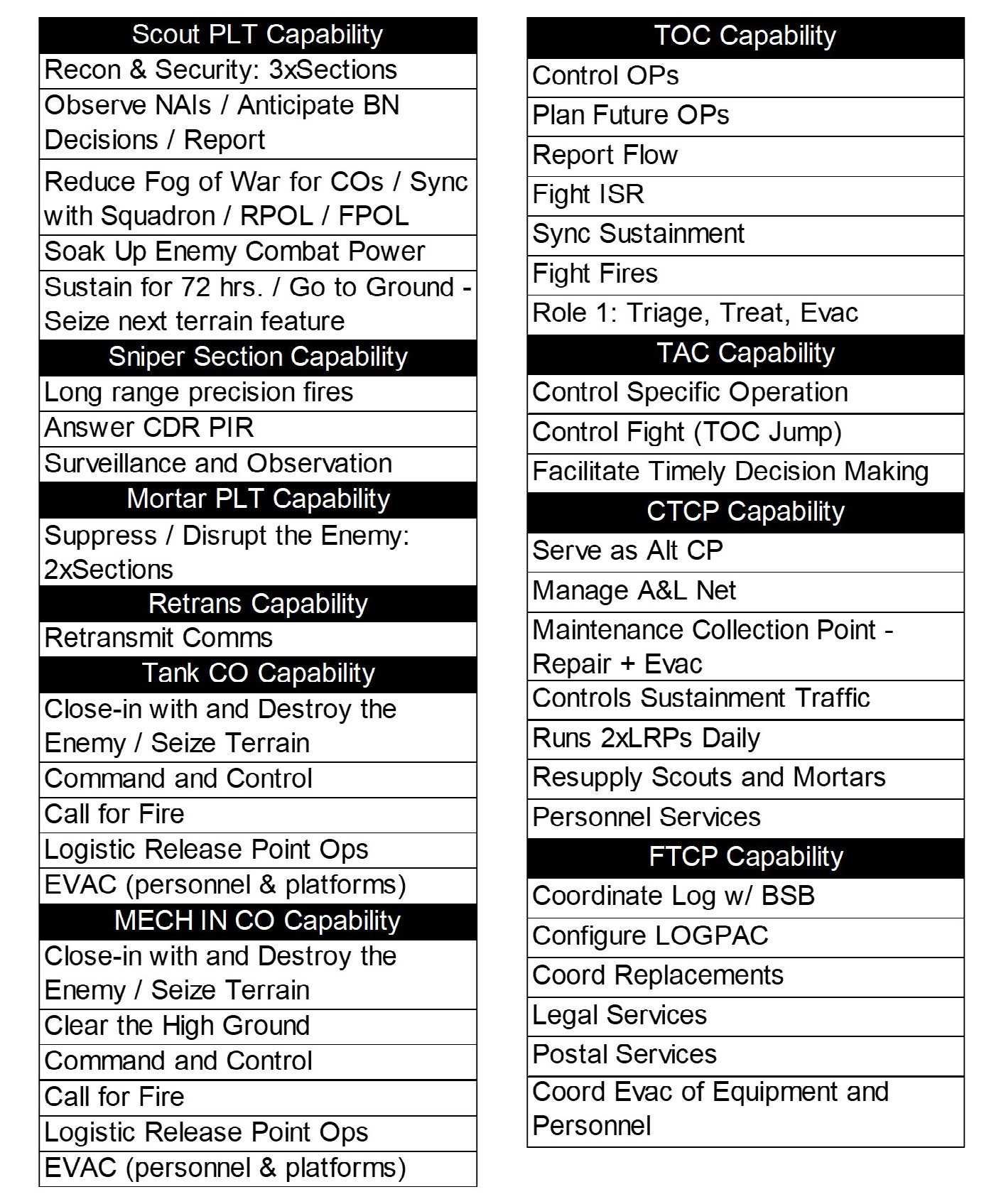
Table 1. List of capability requirements. (U.S. Army)
The O/H column is based off the modified table of organization and equipment list, the Fight column is the
requirement defined by the battalion commander, and the company column is the current slant of the item. If the
company fully mission capable (FMC) equals or is greater than the Fight column, the status box remains blank. If
the company FMC is less than the Fight column, the status box turns red. The final column Manned encompasses
personnel readiness. It is a seemingly innocuous column but one that conveys significant information. If the
platform is manned (denoted by Y), it means that the crew is deployable, qualified and meets all rank
requirements (particularly if an NCO vehicle commander is required). If a platform is not manned due to
personnel short-ages, the team can assume risk and not devote maintenance energy to that platform or request
support from higher.
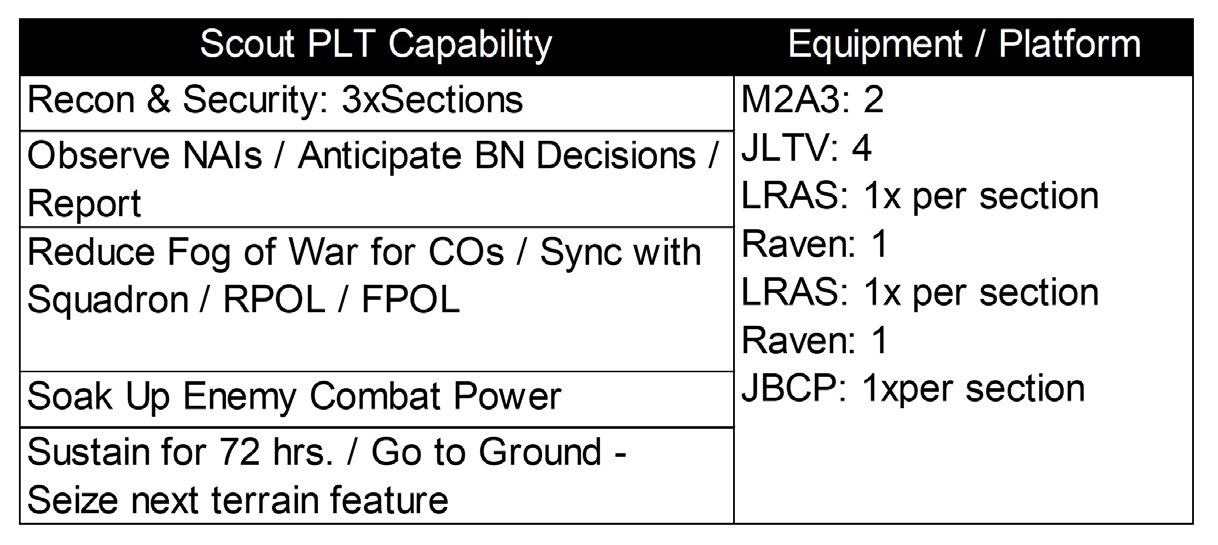
Table 2. Scout capability and equipment/platform requirements. (U.S. Army)
Once done throughout each element and command node, the gaps in readiness (maintenance + personnel) be-come
readily clear. This provides the battalion a clear snapshot of where their maintenance and personnel readiness
gaps exist based on lethality requirements. Leadership can then develop a maintenance strategy over time,
applying the maintenance enterprise against a prioritized list. The battalion maintenance officer then
coordinates with the S-3 Operations Shop and puts the maintenance strategy (unscheduled maintenance, services
and leadership professional development) on the training calendar. This is a way to synchronize training and
maintenance lines of effort based on required lethality capabilities. It is a holistic strategy to streamline
efforts, provide clear guidance and prioritization, and identify areas where the battalion can assume risk. The
overall assessment maintenance and personnel readiness status is captured in Table 5.
Provide clear snapshot
Based on this assessment, the battalion can clearly identify priorities and friction points, and the commander
can provide Training Week (TW)+8 guidance. Furthermore, this dashboard (comprised of Figure 2 and Table 5)
provides a tangible output (status up date) for CAB meetings. The battalion training meeting must entail the
development of capabilities required by the CAB to accomplish its mission while maintenance and personnel
readiness (non-deployable scrubs, etc.) meetings must feed Table 5. Commanders are responsible, with input from
their first sergeants and executive officers (XOs), to update the battalion commander on the dashboard. While
this is a way to organize and assess capabilities and personnel, there are several doctrine, organization,
training, materiel, leadership and education, personnel, and facilities (DOTMLPF) efforts that can better equip
the CAB in building readiness.
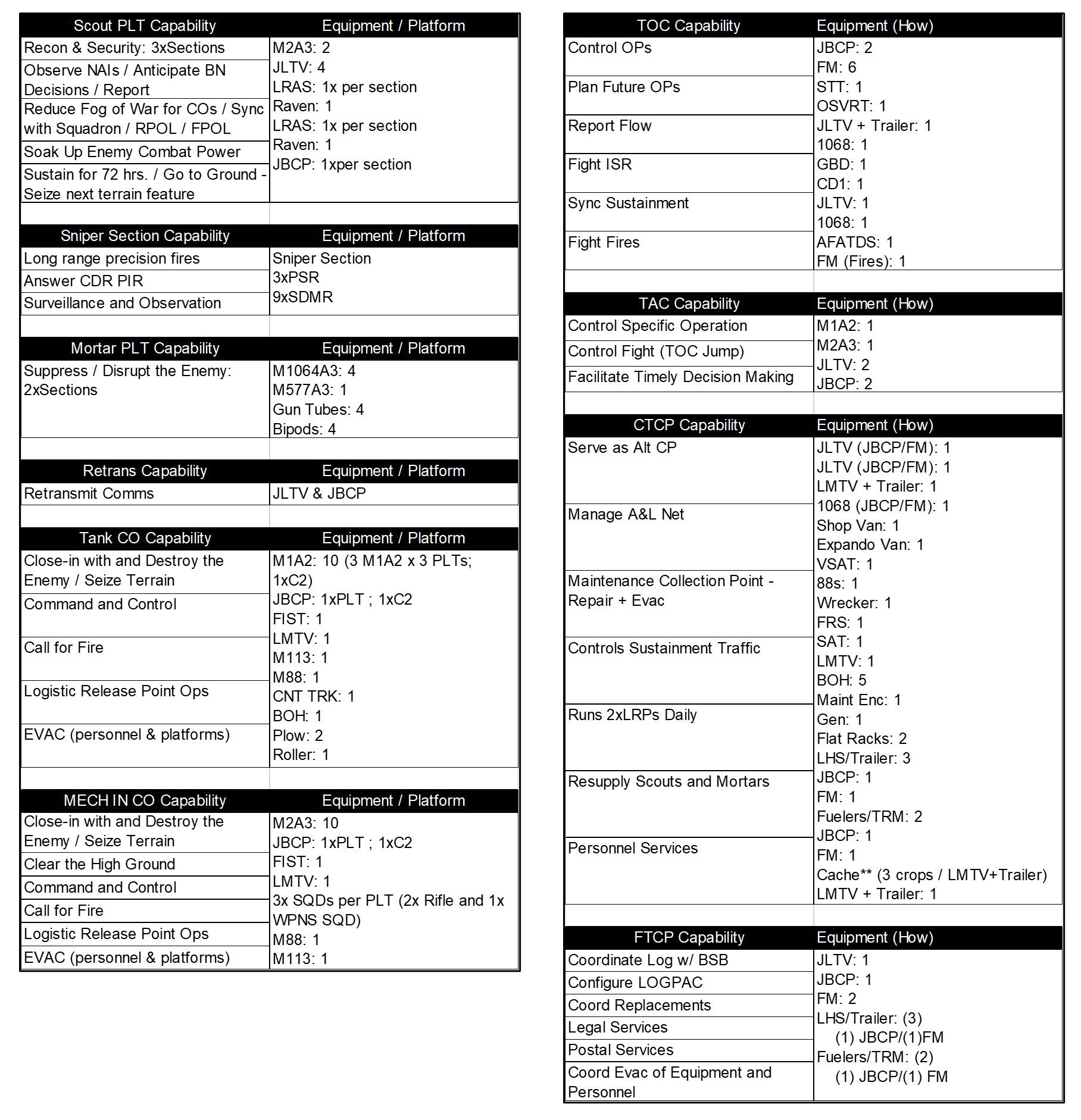
Table 3. Consolidated list of capability and equipment/platform requirements. (U.S.
Army)
Even with clear guidance and a detailed maintenance strategy, CABs will continually face challenges in
execution. Below are several DOTMLPF recommendations that would support and streamline maintenance operations.
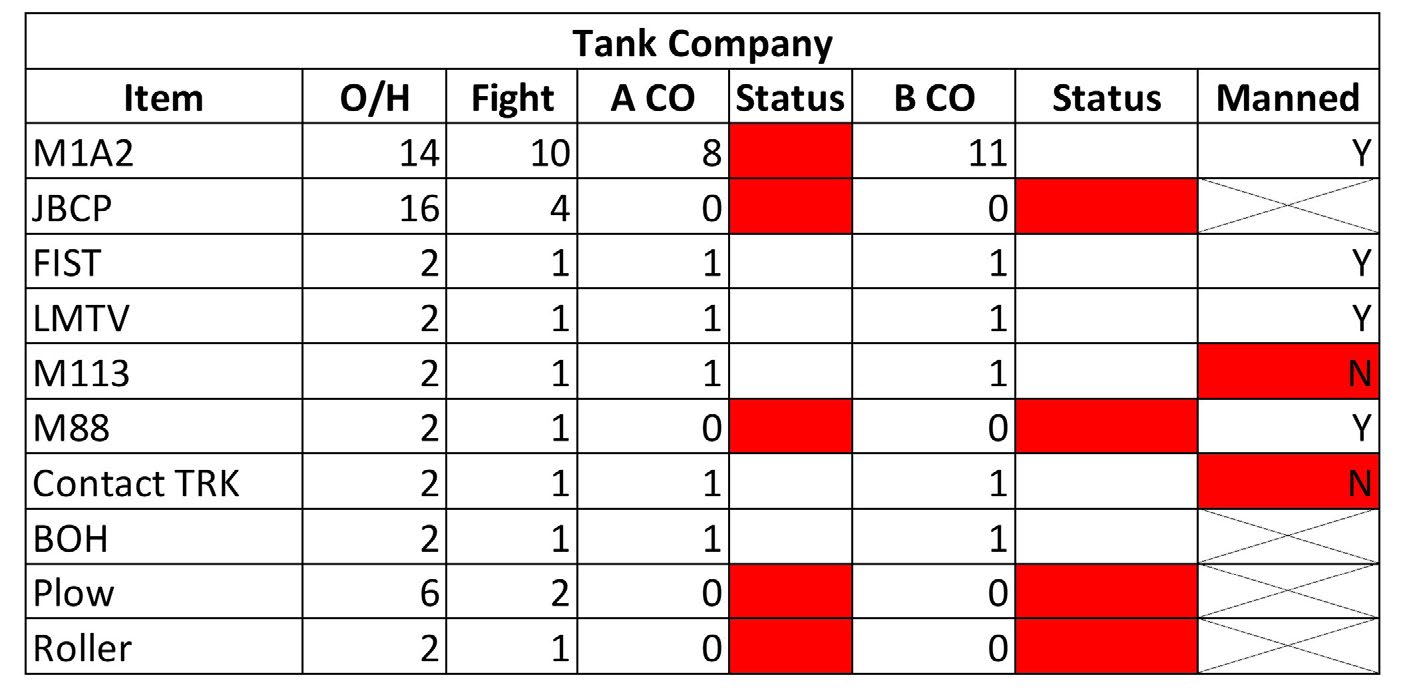
Table 4. Tank company maintenance and personnel readiness status. (U.S.
Army)
Recommendations to support CAB maintenance
Recommendation #1 (Organization/ Personnel): Radio Equipment Repairers (MOS 94E) and
Computer/Detection Systems Repairers (MOS 94F) Organic to the CAB.
Due to the sheer amount and complexity of communication systems and equipment, it would benefit the CAB to have
one NCO and two 10-level Soldiers organic to the CAB for internal communication and electronics (C&E) and
electronic maintenance (ELM) repairs. Currently, all night vision devices and communication devices are
evacuated to the brigade support battalion for repair/service.
Centralized repair naturally creates a backlog, which prioritizes units executing training for repairs. This
inhibits units preparing for training to conduct proper repairs and services prior to execution. Having organic
C&E and ELM capabilities will decrease overall turnaround time, create shop stock for common repairs, and
provide flexibility in garrison/field environments to build equipment readiness.
Recommendation #2 (Education): Training Deficiencies for MOS 91F (M242 25mm) and MOS 91A (M1
Abrams Schematics).
Small Arms Repairers (MOS 91F) and Tank Mechanics (MOS 91A) do not receive sufficient
training through Army schools to prepare them for operations. The 91F is responsible for servicing the M242 25mm
Bushmaster. They do not receive adequate training during advanced individual training (AIT) to properly service
and repair the weapon system. While master gunners are present to assist in repairs and services, they are only
capable of executing 10/20 level tasks and repairs. The 91F is responsible for 30 level tasks, but they are not
provided the education needed to complete these repairs. The Army must increase training time during AIT for 91F
Soldiers, so they are equipped to execute repairs once they get to their unit. An alternate solution is to make
the repair/services of the M242 a critical task for Bradley mechanics (MOS 91M).
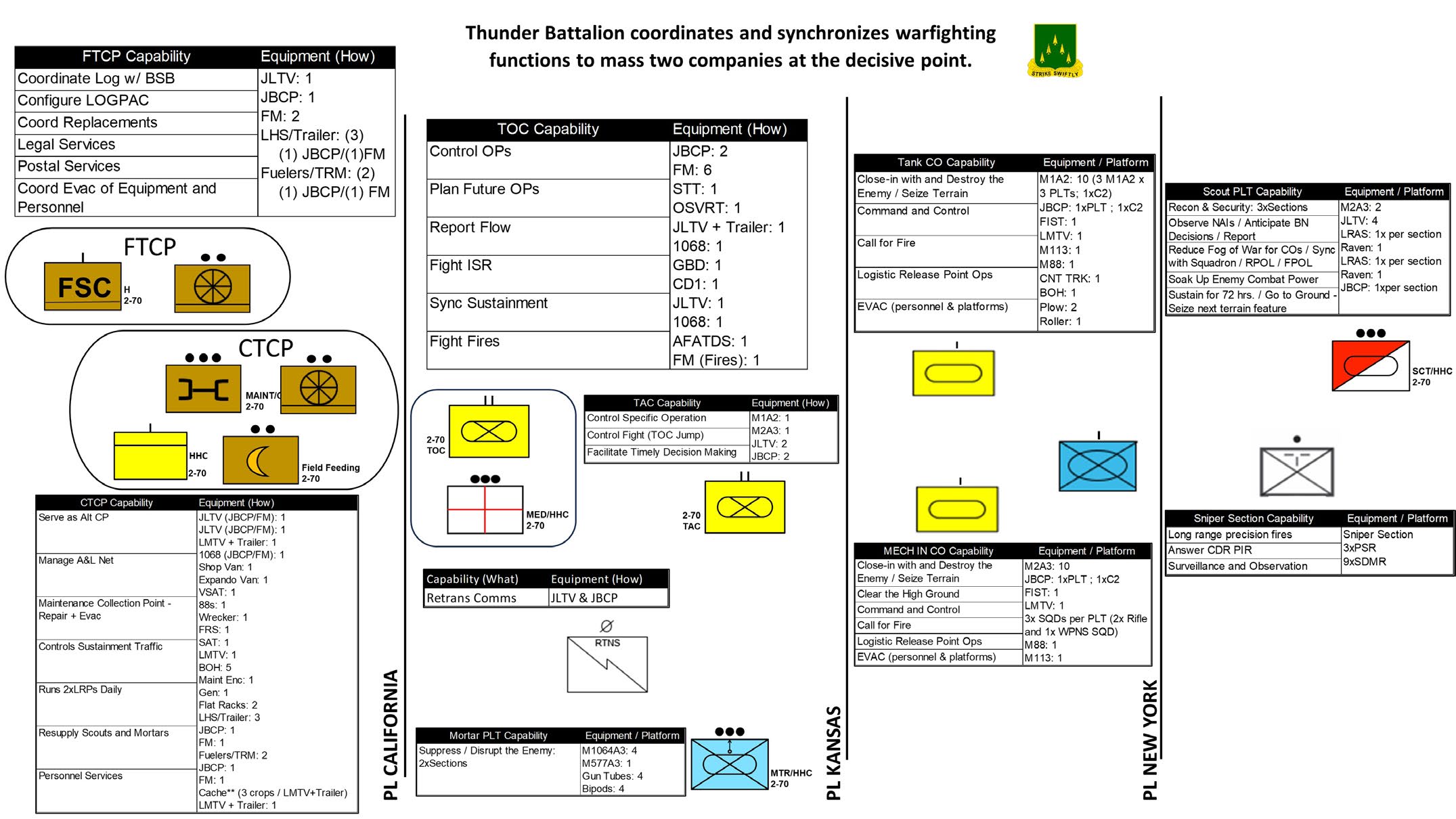
Figure 2. Thunder Battalion coordinates and synchronizes warfighting functions to
mass two companies at the decisive point. (U.S. Army)
91A Soldiers must receive tank schematic training during AIT. This is increasingly significant as the CAB fights
through personnel challenges and many mechanics fulfill positions of greater responsibility than their rank. In
a CAB, junior 91As frequently are faced with tank schematic faults. There is a knowledge deficiency in tank
schematics for junior 91A Soldiers. These tank mechanics do not receive training on tank schematics until the
Advanced Leader Course. Tank mechanics, like their Bradley mechanic counterparts, should receive training on
schematics during AIT.
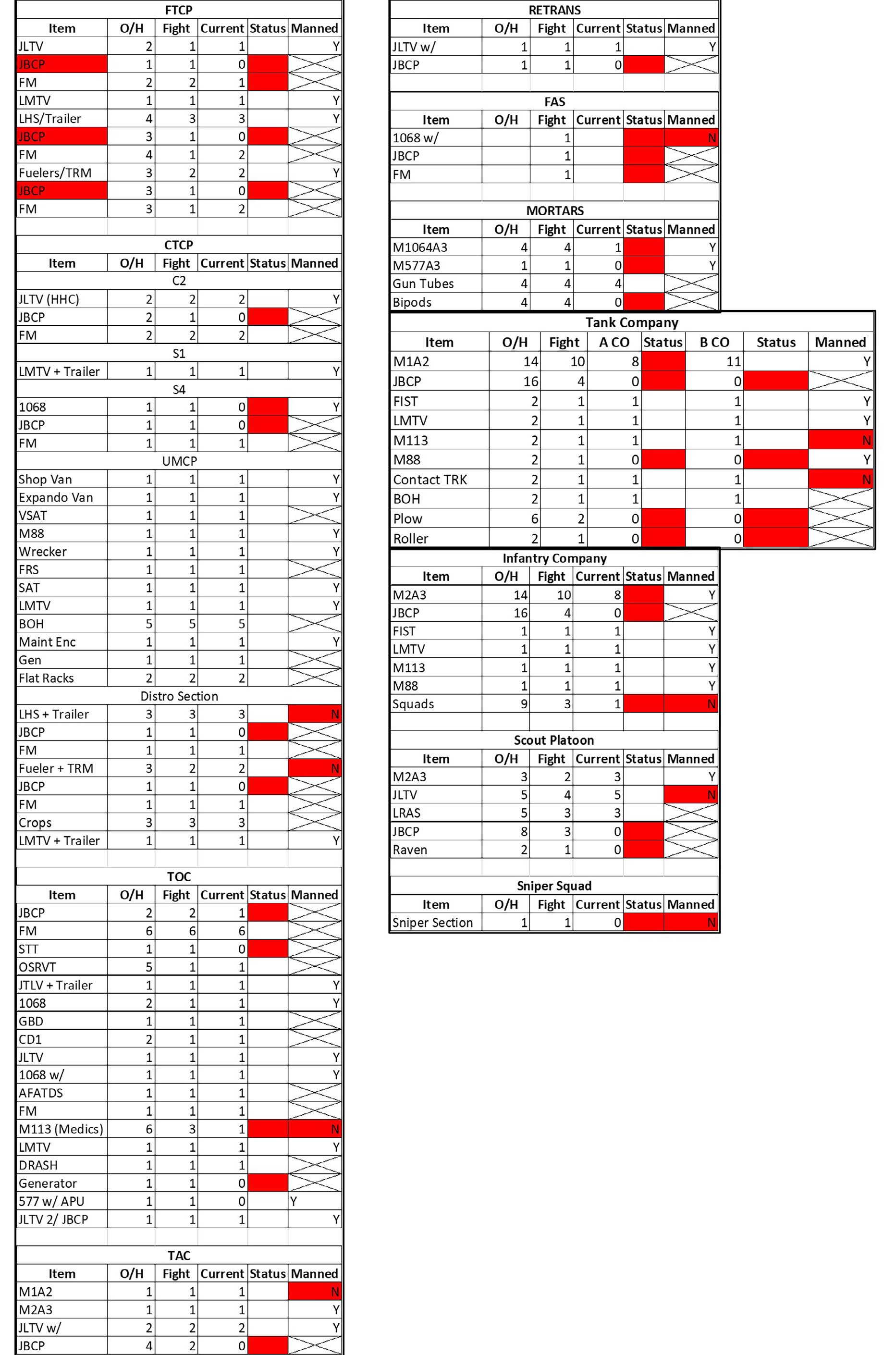
Table 5. Consolidated list of maintenance and personnel readiness status by element
and command node. (U.S. Army)
The Maintenance Process and Friction Table 6. Use Case and Functional Requirements for Digital 5988 Software.
(U.S. Army) Points. Soldiers conduct preventative maintenance checks and services (PMCS) and manually annotate
faults on a Form 5988. Mechanics, with a senior mechanic and team chief, then verify the faults and either
dismiss (wrong annotation), repair, or request parts to be ordered. Once this process is complete, the equipment
records parts specialist (ERPS) clerk manually inputs this information into Global Combat Support System – Army
(GCSS-Army). There are two points of friction in this process. The first is the transition from a manual process
(Form 5988) to a digital process (manual input of the 5988 information by the ERPS clerk into GCSS-Army) and the
second is the manual search of parts by National Item Identification Number (NIIN). To alleviate these frictions
points, the following recommendations are presented.
Recommendation #3 (Material): Digital 5988: The amount of error that exists in the current
manual process can be reduced through a digitized system. Additionally, the workload for clerks to manually
input 5988 information into GCSS-Army can also be reduced. A software application with a simple user interface
that can be accessed by all users is advantageous. Table 6 below annotates the use case and functional
requirement for this software application.
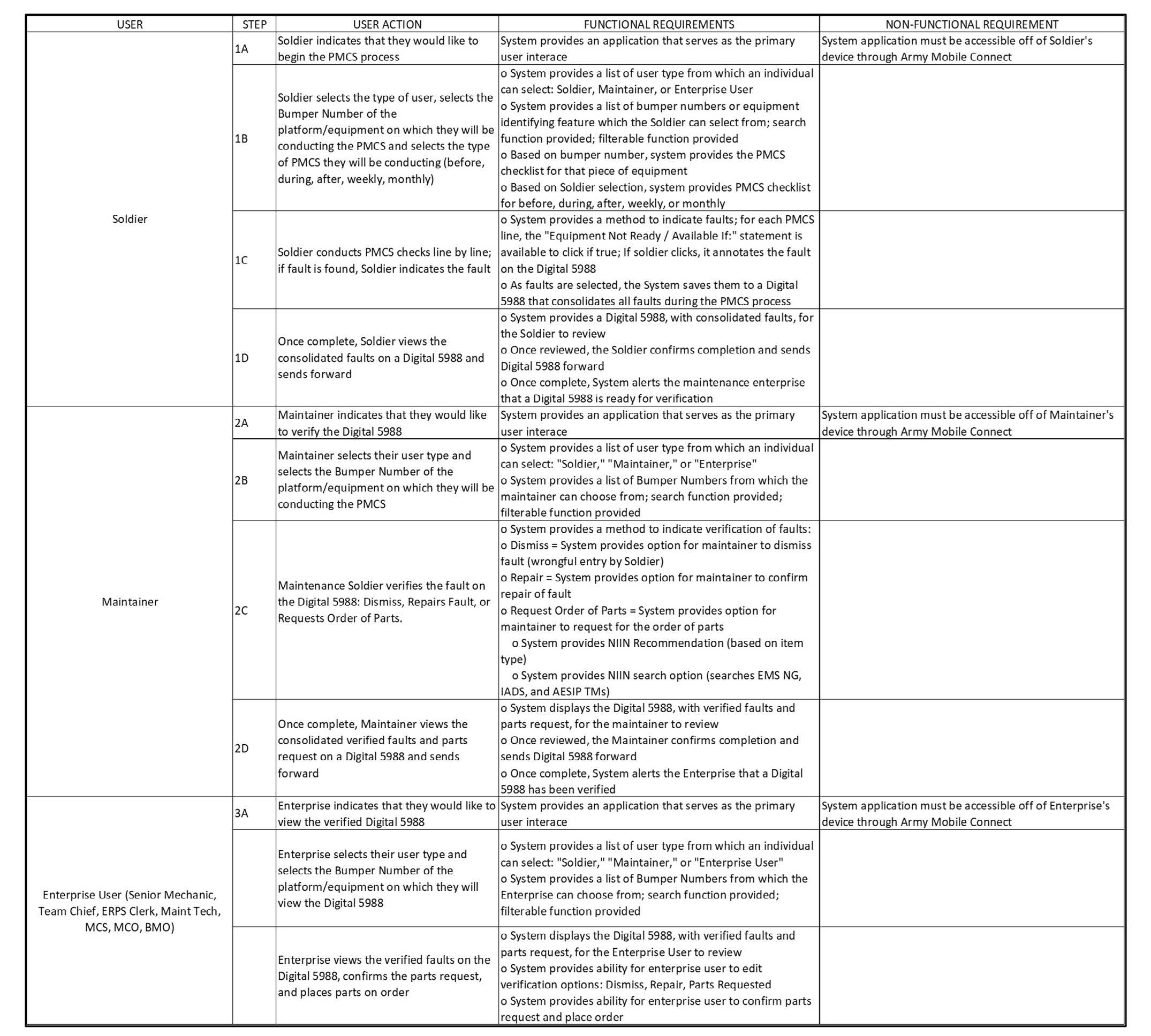
Table 6. Use Case and Functional Requirements for Digital 5988 Software. (U.S.
Army)
Recommendation #4 (Material): Artificial Intelligence Chatbot for NIIN Search
The current
process to find correct NIINs for parts is inefficient and desynchronized. Currently, users have three disparate
and delinked locations to look for NIINs: Electronic Management System-Next Generation; technical manuals
through the Army Enterprise System Integration Program; and Interactive Authoring and Display Software.
Additionally, there are numerous NIINs for similar parts or like items which induces error.
It is not uncommon for a unit to receive a part only to find that it is the wrong item. An artificial
intelligence (AI) Chatbot that an enterprise user can interact with to search through all three systems
simultaneously would save inordinate amounts of time and reduce human error. The advent of AI software that can
assist in the creation of datasets, train AI, and automate workflows, makes this a reasonable endeavor.
Companies like Palm AI through their Endobyte Software as a Service allows users to customize datasets, execute
AI training and implement AI Chatbots. Below is the use case and functional requirements for this software.
Conclusion
Combined arms battalions are faced with challenges as the Army modernizes and transforms during an inter-war
period. In a time and resource constrained environment, it is imperative Table 7. Use Case and Functional
Requirements for AI Chatbot NIIN Search Software. (U.S. Army) that the CAB commander provides a clear and
detailed fighting strategy to coordinate and synchronize training and maintenance lines of efforts. By defining
lethality at echelon, a CAB can prioritize maintenance requirements and develop a coherent strategy over time
and space. The operational tempo for armored brigade combat teams has been significant and does not look to slow
down. It is important that CAB leadership find efficiencies in the ReARMM framework to increase warfighting
capabilities throughout the formation.

Table 7. Use Case and Functional Requirements for AI Chatbot NIIN Search Software.
(U.S. Army)
Authors
LTC Mike Kim is the battalion commander, 2nd Battalion, 70thArmor Regiment, 2nd Armored Brigade Combat
Team (ABCT), 1st Infantry Division, Fort
Riley, KS. His previous assignments include Command and General Staff College (CGSC) Fellow, Office of Management and Budget, White House, Washington D.C.; Director, Joint Pacific Multinational Readiness Center, Fort
Shafter, HI; Brigade S-3, 196th Infantry
Brigade, U.S. Army Pacific (USARPAC),
Fort Shafter, HI; squadron executive officer, and 8th Squadron, 1st Cavalry Regiment, 2ndStryker Brigade Combat
Team, 2nd Infantry Division, Joint Base
Lewis-McChord (JBLM), WA. LTC Kim’s
military schools include Officer Basic
Course, Fort Knox, KY; Maneuver Captain’s Career Course (MCCC), Fort Knox;
and CGSC, Fort Leavenworth, KS. He
has a bachelor’s of science degree in
comparative politics from the U.S. Military Academy at West Point, NY; a
master’s of science degree military art
and science from CGSC; and a master’s
of engineering degree in systems engineering from Cornell University.
MAJ Nate Bennett is the Secretary of the General Staff, 1st Infantry Division,
Fort Riley, KS. His previous assignments
include battalion XO, 2-70 Armor, 2nd
ABCT, 1st Infantry Division; battalion
operations officer, 2-70 Armor, 2nd
ABCT; team leader in 2nd Battalion, 3rd
Security Force Assistance Brigade
(SFAB); commander, Headquarters and
Headquarters Company (HHC), 2nd Battalion, 87th Infantry Regiment, 2nd Brigade Combat Team (BCT), 10th Mountain Division; and commander, Company B, 2-87 Infantry, 2nd BCT, 10th MTN
DIV. MAJ Bennett’s military schools include Ranger Course; Pathfinder
School; Air Assault School; Airborne
Course; Survival, Evasion, Resistance,
and Escape Level C (SERE-C), U.S. Army
SERE School; and the Infantry Mortar
Leader Course. He has a bachelor’s of
science degree in defense and strategic
studies from the U.S. Military Academy,
West Point, NY; and a master’s degree
in operational studies from the U.S.
Army Command and General Staff College.
CW3 Jason T. Amsdell is the battalion
maintenance technician, 2nd Battalion,
70th Armor Regiment, Fort Riley, KS. His
previous assignments include battalion
maintenance technician, 2nd Infantry
Brigade Combat Team, 11th Airborne
Division, Joint Base Elmendorf-Richardson, AK; battalion maintenance technician 1st Battalion, 325th Airborne Infantry Regiment, 82nd Airborne Division, Fort Liberty, NC; and maintenance
management NCO, 7th Special Forces
Group Airborne, Eglin Air Force Base
(AFB), FL. CW3 Amsdell’s military
schools include Jumpmaster Course,
Eglin AFB; Unit Movement Officer
Course, Fort Richardson, AK; Standard
Army Maintenance System–Enhanced (SAMS-1E) Course, Fort Richardson;
Standard Army Retail Supply System -
Level 1 (SAARS1) Course, Bagram, Afghanistan; Advanced Leaders Course;
Senior Leaders Course; Warrant Officer
Basic Course; and Warrant Officer Advanced Course, Fort Gregg-Adams, VA.
CW3 Amsdell completed Lean Six Sigma - Army Business Management. His
awards include the Bronze Star Medal,
Meritorious Service Medal and the
Combat Action Badge.
1LT Collette Benavidez is the battalion
maintenance officer, 2-70 Armor Regiment, 2nd ABCT, 1st Infantry Division,
Fort Riley, KS. Her previous assignments include maintenance control officer, H Forward-Support Company
(FSC), 2-70 Armor, 2nd ABCT; maintenance platoon leader, D FSC, 5th Squadron, 4th Cavalry Regiment, 2nd ABCT, 1st
Infantry Division; maintenance control
officer, D FSC, 5-4 Cavalry, 2nd ABCT;
and S-3 Overstrength, HHC, 299th Brigade Support Battalion, 2nd ABCT. 1LT
Benavidez completed the Quartermaster Basic Officer Leader Course, Fort
Gregg-Adams, VA. She has a bachelor’s
of arts degree in international relations
from American University.
Acronym Quick-Scan
ABCT – armored brigade combat team
AESIP – Army Enterprise Systems
Joint Battle Command-Platform
AFATDS – Advanced Field Artillery
Tactical Data System
AFB – air force base
AI – artificial intelligence
AIT – advanced individual training
BAS – battalion aid station
BCT – brigade combat team
BMO – battalion maintenance officer
C&E – communication and electronics
CAB – combined arms battalion
CGSC – Command and General Staff
CTCP – combat-trains command post
DOTMLPF – doctrine, organization, training, materiel, leadership and education, personnel,
and facilities DRASH – Deployable Rapid Assembly Shelter
ELM – electronic maintenance
EMS – Electronic Management System
ERPS – equipment records parts specialist
EVAC – evacuate
FiST – fire-support team
FMC – fully mission capable
FPOL – forward passage of lines
FSC – forward-support company
GCSS-Army – Global Combat Support
HHC – headquarters and headquarters company JBC-P –
JLTV – Joint Light Tactical Vehicle
LMTV – Light Medium Tactical Vehicle
LOGPAC – logistics package
LRAS – Long-Range Acquisition System
MCO – maintenance control officer
MCS – mission-command system
MOS – military occupational specialty
NAI – named area of interest
NG – National Guard
NIIN – National Item Identification Number
OSRVT – One System Remote Video Terminal College
PMCS – preventive-maintenance checks and services
PIR – priority intelligence requirement
ReARMM – Regionally Aligned Readiness and Modernization Model
RPOL – rearward passage of lines
RETRANS – retransmission
STT – Satellite Transportable Terminal
TAC – tactical command post
TOC – tactical operations center
TM – technical manual
UMCP – unit maintenance collection point
